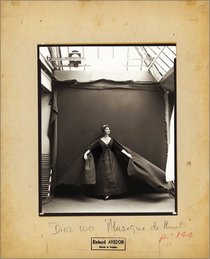Search -
Richard Avedon: Made in France
Richard Avedon Made in France
This major new monograph stands as an important rediscovery of a small but central body of work in the career of one of the world's best known and beloved photographers. The Richard Avedon images presented here, many for the first time, were made in Paris for "Harper's Bazaar" during the 1950s. What is particularly special about this presentati... more »
This major new monograph stands as an important rediscovery of a small but central body of work in the career of one of the world's best known and beloved photographers. The Richard Avedon images presented here, many for the first time, were made in Paris for "Harper's Bazaar" during the 1950s. What is particularly special about this presentati... more »
ISBN-13: 9781881337126
ISBN-10: 188133712X
Publication Date: 1/15/2002
Pages: 56
Rating: ?
ISBN-10: 188133712X
Publication Date: 1/15/2002
Pages: 56
Rating: ?
0 stars, based on 0 rating
Genres:
- Arts & Photography >> Individual Artists >> ( A-C ) >> Avedon, Richard
- Arts & Photography >> Photography & Video >> Collections, Catalogues & Exhibitions
- Arts & Photography >> Photography & Video >> Fashion
- Arts & Photography >> Photography & Video >> General
- Arts & Photography >> Photography & Video >> Photographers, A-Z >> General
- Arts & Photography >> Photography & Video >> Photo Essays




